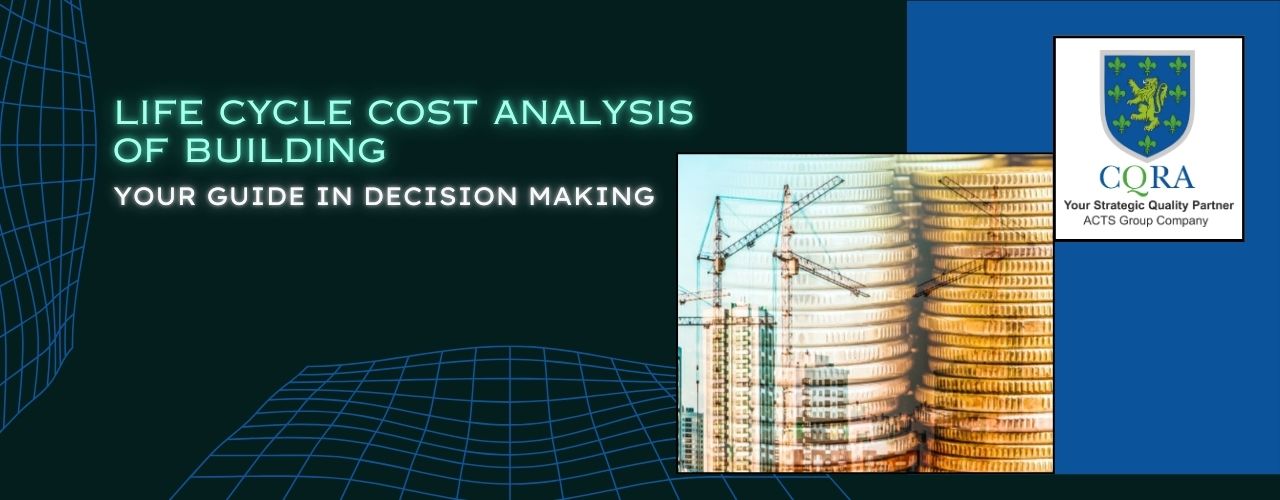The ultimate objective of Life Cycle Cost Analysis is to get the most value out of the investment in your construction projects
If you are a Construction Project Developer, answer this seemingly innocuous question –
Does all work and expenses of a building project end when the construction is completed ?

If your answer is yes, then how do you factor in leaks and cracks, wear and tear, energy costs and maintenance efforts that are a continuous cycle? If you have not thought about these probable issues before you embarked upon the project, it is likely that they will come sooner or later in the picture and and greatly upset your project finances.
So what will help you prepare and steer clear of such situations?
Called the Life Cycle Cost Analysis, this is the science of evaluating the true cost of not just constructing but also operating a building over its entire lifespan.
Story of the Taj Mahal Repairs

Every building is going to have operating issues and costs associated with that, even the magnificent Taj Mahal. An interesting anecdote can be found in an Archaeological Survey of India report that mentions a letter Aurangzeb wrote to his father Emperor Shah Jahan. It was the rainy season and several domes of the Taj Mahal were leaking and underground arches had developed cracks. After the detailing the damages, the Prince goes on to write that the repairs were carried out but only the next rains would tell if they were successful or not. So, even after you build an astounding landmark, its upkeep should be thought of from the start to create a sustainable project.
Taj Mahal Image Source – www.google.com
Modern Day Projects and Blunders

Now consider the various public infrastructure projects that routinely develop cracks and leaks, just after being constructed. Citizens are left dismayed at the waste of public money and the red-faced authorities scurry to get their act together and address the leaks and cracks. All this has a bearing on the economics of the project. Managers only concentrate on getting the facility built and running. Over the years, replacement of facilities is also a cost to be considered. Numerous projects like flyovers and roadways are built and then closed for repair work or demolished due to faulty design and structural issues. Hence project managers need to account for the cost of rework, demolitions and repairs in the lifecycle of a construction.
The ultimate objective of Life Cycle Cost Analysis is to thus save money and get the most value out of the investment in your construction projects. This is how it is done –

Your trusted Third Party Agency, like CQRA, has experts who examine the long term systems or equipment and material costs. This works best when done in the early stages of the project giving the client a clear picture and flexibility to ponder on design choices that will affect costs and performance.

System or Equipment Cost Analysis – Heating, air conditioning, lighting or generators need to be efficient to reduce energy costs over the years. So in their analysis Third Party Construction Inspection Agencies will discuss your needs and suggest appropriate measures. If it is a public administration building, then the systems must be factored in for long term use but if it’s a facility that the builder wishes to sell soon, then the priorities change.

Material Cost Analysis – Oftentimes products that have a good durability have a high initial cost. However, if you are building a hospital or a mall that sees a lot of footfalls, then expensive flooring will prove to be cost effective in the longer run as it has a lower life cycle cost. On the other hand if it’s interior of a restaurant that you might wish to redo often, then you could go for cheaper material and invest on better systems like air conditioning.

Strategize Long Term – A strategically done process, your Third Party Agency will consult with your team and all consultants working on the project like the Architect and MEP Engineers. With data analysis the Agency will advise you on the best options in terms of systems, equipment and materials to use so that you have the right financial plan in place for your project. Thus thinking smartly about your long term costs and optimizing your design is the best thing you can do for a successful project that stands the test of time.

